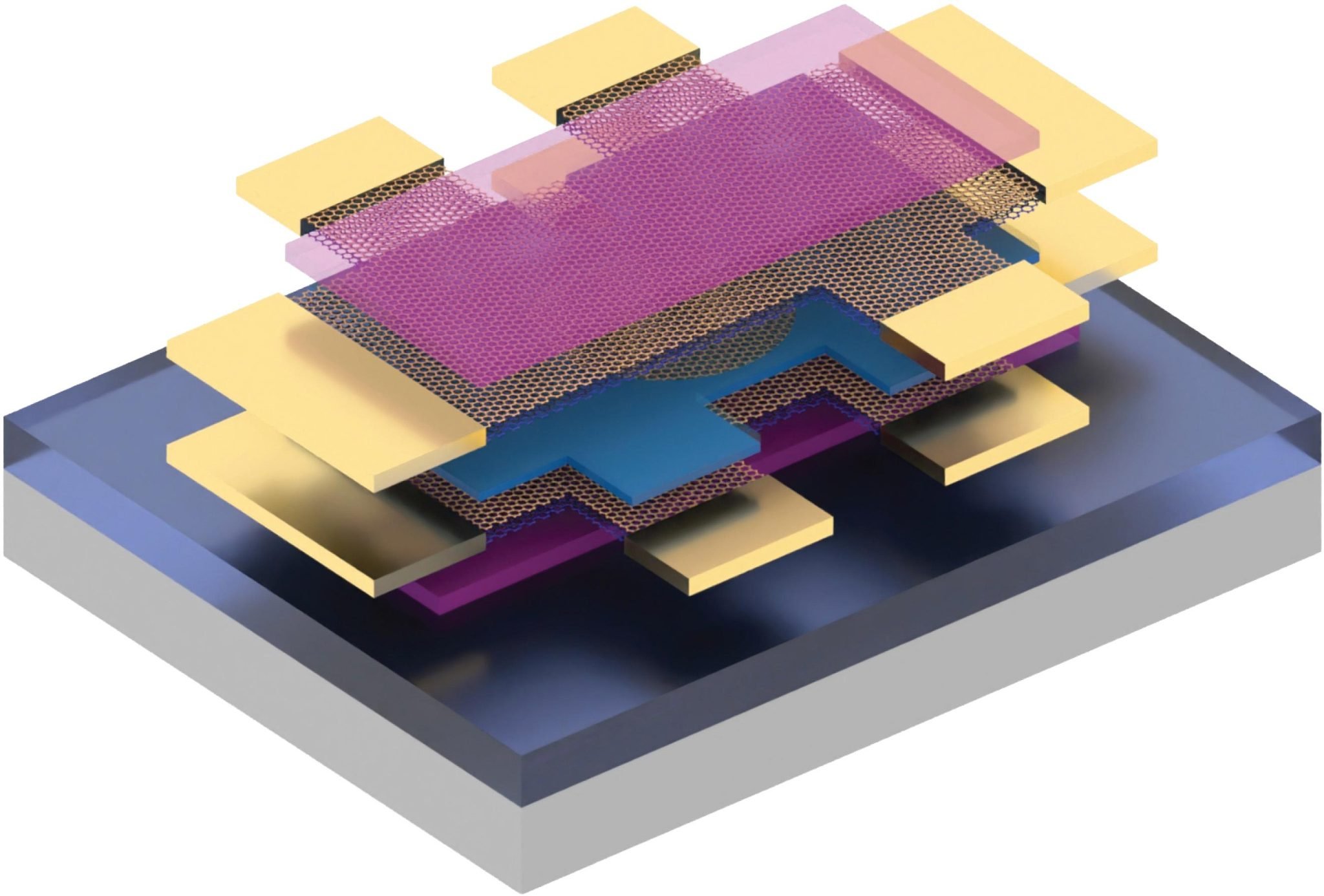Follow us on Google News (click on ☆)
The researchers developed an innovative experimental method combining two quantum measurement techniques. By simultaneously observing the phenomenon of electron "tunneling" and electrical resistance, they were able to capture the formation of the superconducting state in real time. This approach allowed them to identify a characteristic V-shaped signature in the "superconducting gap," a measurement that reveals how electrons organize themselves to enable superconductivity.

Physicists use a new platform to measure the superconducting gap of "magic-angle" graphene. The method involves electron "tunneling" between two layers of triple twisted graphene (in yellow) while measuring the superconducting state of the material. These experiments show for the first time clear evidence that MATTG is an unconventional superconductor.
Credit: Pablo Jarillo-Herrero, et al
Unlike traditional superconductors where the gap appears uniform, this V-shape indicates a radically different electron coupling mechanism. The electrons appear to associate much more closely, almost as if they were forming molecules. This particularity shows that interactions between electrons, rather than atomic lattice vibrations, would be at the origin of superconductivity in this material.
The triple-layer "magic-angle" graphene is obtained by stacking three ultra-thin carbon sheets with a precise twist of approximately 1.1 degrees. This configuration profoundly modifies the electronic properties of the material, creating conditions favorable for the emergence of unusual quantum phenomena. The ability to control these properties through simple twisting opens the way to fine engineering of quantum materials.
This discovery could accelerate research toward superconductors operating at room temperature. By better understanding the unconventional mechanisms at work in these graphene structures, scientists hope to design new materials usable for creating lossless electrical grids, medical imaging, or quantum computing.
The researchers now plan to apply their method to other two-dimensional materials, seeking to identify new superconducting candidates. This approach allows direct study of how electrons form pairs and interact with other quantum states, offering a unique window into the microscopic world of quantum materials.
The phenomenon of superconductivity
Superconductivity represents a special state of matter where electrical resistance becomes exactly zero. In this state, electric current can circulate indefinitely without energy loss, somewhat like a perfect fluid that would flow without friction.
This state generally appears at extremely low temperatures, often close to absolute zero (-273°C). Materials must be cooled using liquid helium or nitrogen, which considerably limits their practical applications despite their remarkable efficiency.
The fundamental mechanism involves the formation of "Cooper pairs," where two electrons associate despite their natural repulsion. In conventional superconductors, this association is mediated by crystal lattice vibrations, while in unconventional superconductors, more complex electronic interactions come into play.
The discovery of new superconductivity mechanisms opens the possibility of designing materials operating at higher temperatures, which would revolutionize energy transport and storage.
Graphene and its exceptional properties
Graphene consists of a single layer of carbon atoms arranged in a hexagonal lattice, similar to chicken wire. This two-dimensional structure gives it remarkable electrical and mechanical properties that earned its discoverers the Nobel Prize in Physics in 2010.
The thinnest known material, graphene is also extremely strong and flexible. Its exceptional electrical conductivity makes it an ideal candidate for next-generation electronics and energy applications.
When stacking multiple layers of graphene while slightly twisting them, surprising quantum properties appear. The so-called "magic" angle of approximately 1.1 degrees creates interference patterns that profoundly modify electron behavior.
These twisted structures constitute an ideal platform for studying quantum phenomena and exploring new states of matter, making graphene a promising material for fundamental physics and future technologies.